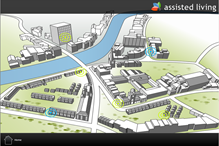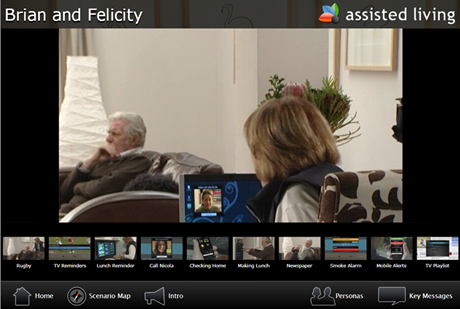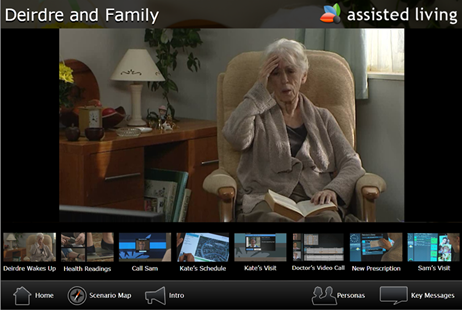Assistive Technology in Healthcare Delivery and Chronic Condition Management
 If I was commenting on Facebook or Twitter about today’s topic on HealthBlog, I would have to give this one a very strong “like”. I’m referring to some new work from an organization in the United Kingdom known as the Digital Access Provision Forum. The Forum exists “to support a step-change in levels of installation and application of integrated digital communication technologies within the UK built environment in support of public and private policy objectives for building performance including energy conservation, education, health services, quality of life and an information driven, more productive, more competitive economy”. Now that is a mouthful, but hold on, because what this group is doing is really cool.
If I was commenting on Facebook or Twitter about today’s topic on HealthBlog, I would have to give this one a very strong “like”. I’m referring to some new work from an organization in the United Kingdom known as the Digital Access Provision Forum. The Forum exists “to support a step-change in levels of installation and application of integrated digital communication technologies within the UK built environment in support of public and private policy objectives for building performance including energy conservation, education, health services, quality of life and an information driven, more productive, more competitive economy”. Now that is a mouthful, but hold on, because what this group is doing is really cool.
 One of Forum’s specific areas of research is to “demonstrate a new approach to exercising informed customer choice for those needing assisted living support in the management of chronic health conditions”. You’ll recall that in my last post on HealthBlog, I shared information about a company, Halo Monitoring, that is doing some very good work on peace of mind home monitoring solutions. Typically, these solutions are for seniors and other individuals with chronic disease or disabilities who are trying to maintain a degree of independence in their own homes.
One of Forum’s specific areas of research is to “demonstrate a new approach to exercising informed customer choice for those needing assisted living support in the management of chronic health conditions”. You’ll recall that in my last post on HealthBlog, I shared information about a company, Halo Monitoring, that is doing some very good work on peace of mind home monitoring solutions. Typically, these solutions are for seniors and other individuals with chronic disease or disabilities who are trying to maintain a degree of independence in their own homes.
 I think it is helpful to be able to envision a possible road map for this kind of technology in the years ahead. That is exactly what the Digital Access Provision Forum has accomplished with an on-line interactive service called the Assistive Demonstrator Tool. The Tool shows how over the next few years people living with long term chronic health conditions will have more choice and better products to support the management of their conditions. And, they will be able to do this from the comfort and convenience of their own homes.
I think it is helpful to be able to envision a possible road map for this kind of technology in the years ahead. That is exactly what the Digital Access Provision Forum has accomplished with an on-line interactive service called the Assistive Demonstrator Tool. The Tool shows how over the next few years people living with long term chronic health conditions will have more choice and better products to support the management of their conditions. And, they will be able to do this from the comfort and convenience of their own homes.
The Tool is a collaborative effort involving the Kent City Council, the Foundation for Assistive Technology, the Buildings Research Establishment, and Microsoft UK. It takes viewers through some well crafted scenarios that help us understand exactly how new consumer technologies might be applied to help us live longer and better, independently. In one scenario, we see how technology might be used to help patients with dementia and help family members who care for them.
In another scenario, ICT helps connect an ailing senior with her family members and community medical resources. These are scenarios that anyone who has ever cared for an aging parent or other loved one will understand all too well.
The scenarios are dramatic and engaging. The user interface for the Tool is stunningly elegant. Furthermore, the vision for how technology can play a role in helping people and families manage chronic conditions and stay connected is spot on.
If you are a developer, medical professional, home care provider, or just someone with a keen interest in technology, I highly recommend a visit to the Digital Access Provision Forum’s Assistive Demonstrator Tool. You’ll be glad you did.
Access the Assistive Demonstrator Tool by CLICKING HERE
(Be patient. The Tool takes time to load and requires Microsoft Silverlight).
Bill Crounse, MD Senior Director, Worldwide Health Microsoft
Technorati Tags: chronic disease,senior care,assisted living,ICT,information technology,Microsoft,Internet,unified communications,digital access provision,healthcare,healthcare reform

